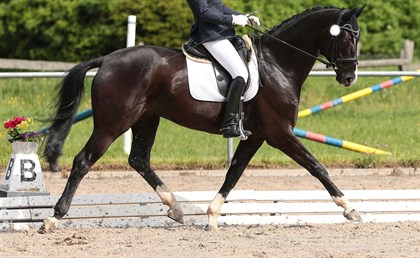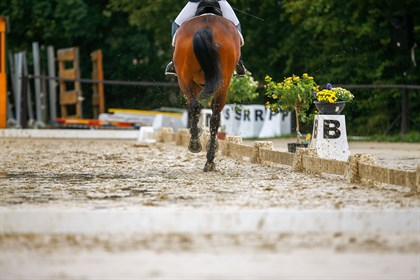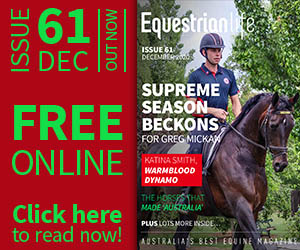|

|

A well conformed horse should have better potential to move well and collect
© FEI
Obviously, a horse that has already gone up the grades and who is competing at a high level successfully would be considered a good horse, but how exactly do you assess talent in a potential young Dressage horse?
When it comes to buying horses that are young or even unbacked, it can be hard to know what to look at to give you the best chances of having a successful Dressage mount in the future. Some people are said to have a ‘good eye’ and routinely pick winners, while others struggle to see the potential in something that isn’t already competing or schooling well.
Having said that, a good eye can be developed to an extent, especially if you know what you’re looking for.
Here, Dressage horse owner Sophie Baker and athlete and trainer Karen Keller take us through three important matters to pay attention to.
1. Paces
When assessing a Dressage horse, you want to look at how they move.
You can do this in the paddock, lunge ring, or under saddle but it is important to see them at a time when they are relaxed. If the horse is being chased around a ring or is playing with other horses you may see movement which is very extravagant but false.
A stiff, raised tail is often a sign of this tension. The horse is unlikely to move like that under saddle because you want the back to be soft and relaxed. In all paces, you want to see a clear and correct rhythm and the tendency to travel uphill.??In the walk, you want to see a good overtrack in the walk and a clear four beat rhythm. While you want good activity in the hind end, you don’t want a horse which ‘walks for a 10’ but rather one which walks for a 7 or 8! This sounds counterintuitive, but a walk that is too big can often lead to problems later when the collected walk becomes more important.
The trot is the pace that riders can improve the most; but you do still want a good amount of natural talent. Here you want suspension and reach. The ideal is a horse that uses his body to cover ground but which still bends the hocks and looks ‘springy’ and light on his feet.
The canter is an important gait too, and can be harder to assess. You want to see a horse who, in the paddock, will canter easily (rather than just trotting) and whose hind end comes underneath the body.
If they show the ability to collect by doing a sliding stop or a quick turn without falling on the forehand, that’s always a good sign! Big, expressive movement always looks lovely, but the ability to shorten the body and collect is what separates a good horse from a great horse. As with the other gaits, the shoulder should be quite open and the horse should demonstrate the tendency to move uphill.
2. The conformation
If you were to take a cross-section of Olympic Dressage horses, you’d probably find a reasonable degree of variation in their conformation. Finding a perfectly conformed horse is near impossible, and some riders will overlook certain flaws that would be a deal breaker for others.
That said, good conformation does certainly stack the odds in your favour – a well conformed horse should have better potential to move well and collect.
More importantly, a horse with good conformation is more likely to stay sound when subjected to the taxing work that high level Dressage requires.
First off, the dealbreakers! As mentioned above, these can vary slightly depending on what you prioritise. However, some flaws which may be limiting in Dressage include:
• Being built ‘downhill’. This will limit the horse’s ability to collect
• Crooked or poorly aligned legs. This could cover a multitude of problems including a horse being toed in or out, having sickle hocks, being cow hocked, being over or back at the knee, or even having a club foot or overly long pasterns.
• Thick in the throat. A horse should have a well-defined throatlatch area. One that is too thick can make it difficult for the horse to flex and yield correctly.
3. The attitude
It can be hard to tell immediately whether a horse will have the right temperament for Dressage or, indeed, any top level competition.
A top Dressage horse doesn’t need to be docile or lazy – in fact, a bit of “spark” is often welcomed. What they do require is a willingness to work and a trainable attitude.
If the horse is under saddle, you have an opportunity to determine how they respond to pressure and new situations; so you may ask for a new movement or similar and see how the horse reacts.
With an unbacked horse, you can only go as far as seeing what they’ll do in the lunge ring or stable. It’s often worthwhile doing your research into breeding here, as many bloodlines tend to produce horses with certain types of temperaments and rideability.

Wonderful dressage horses need a willingness to work and a trainable attitude
© FEI
Words by Sophie Baker
Source: FEI
READ THE LATEST NEWS ARTICLES HERE

|

|

